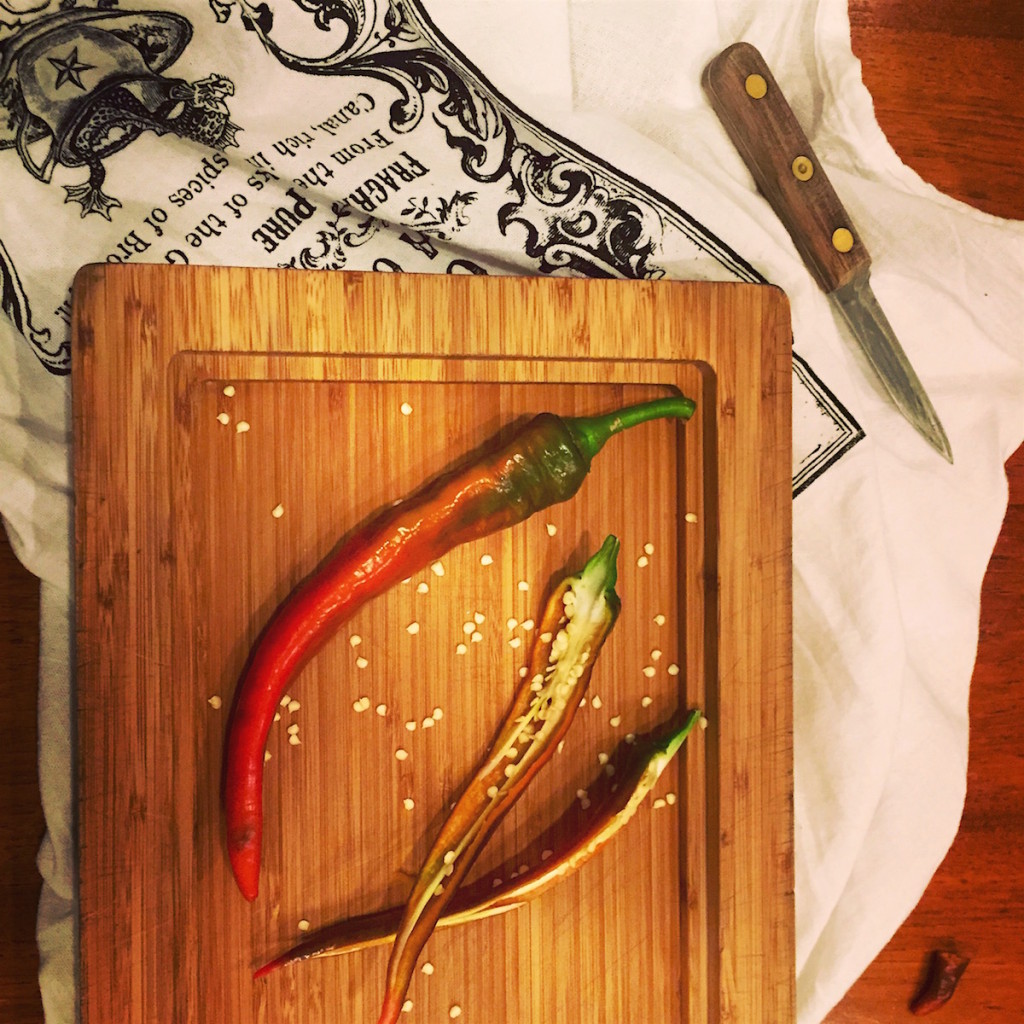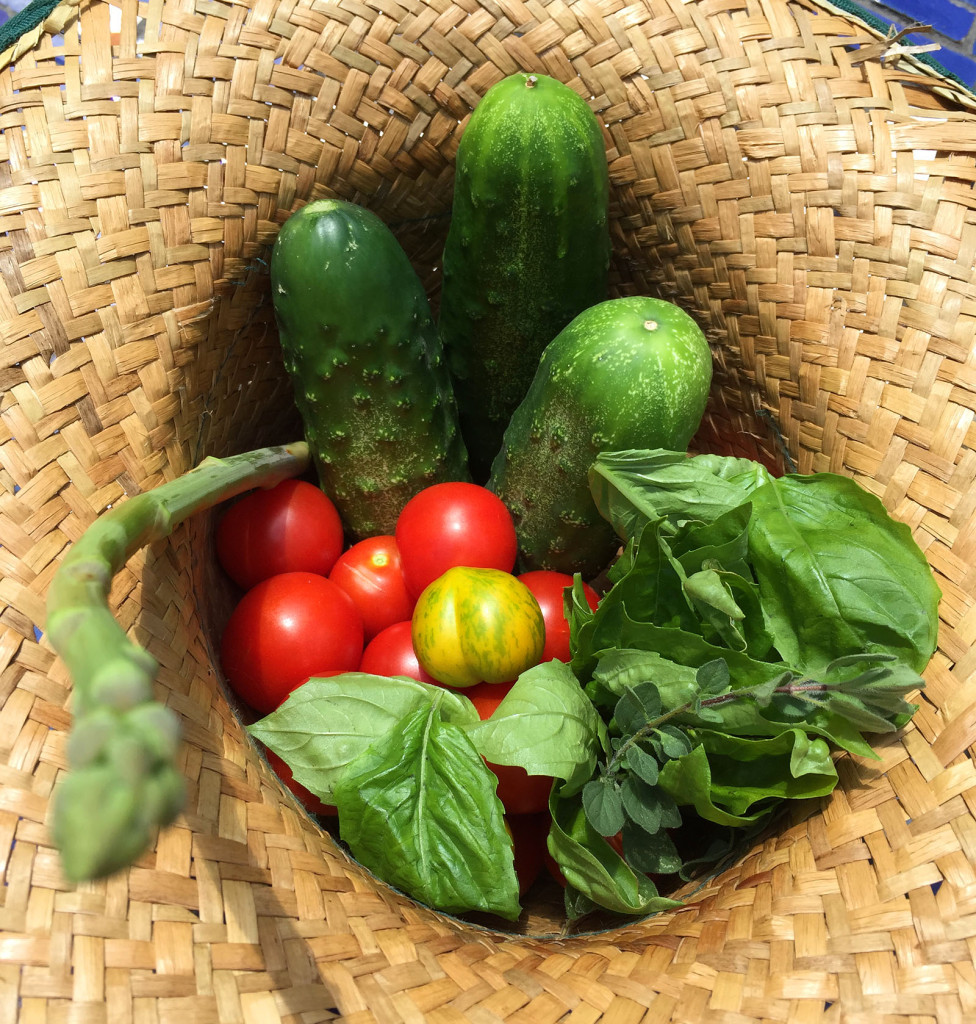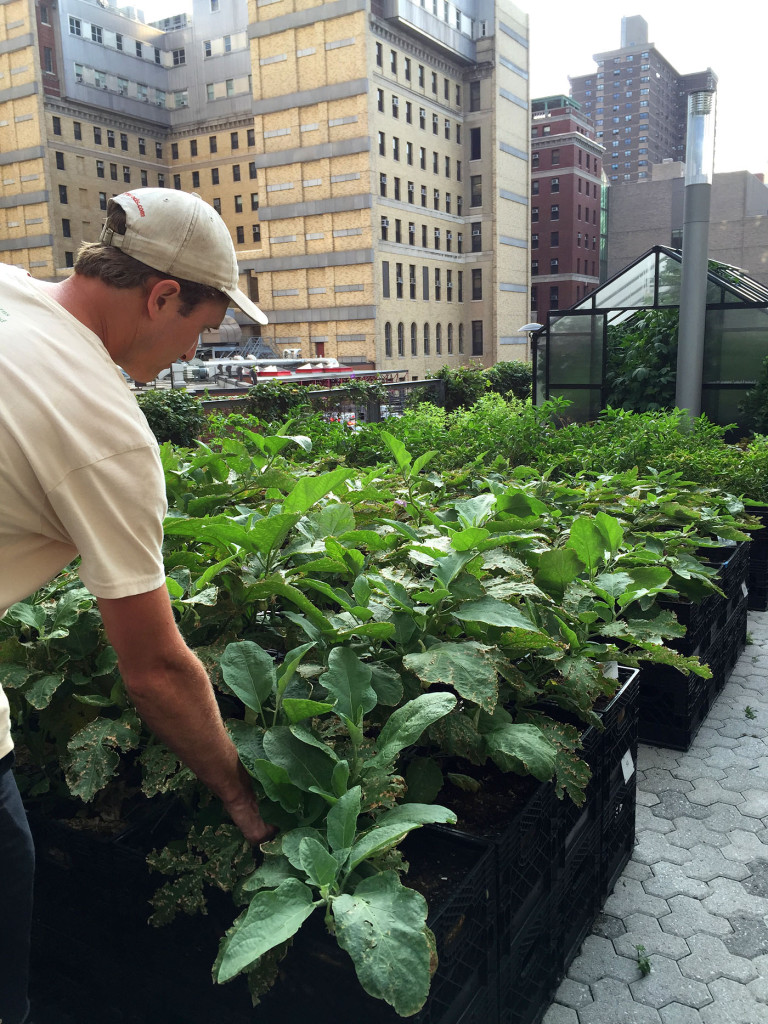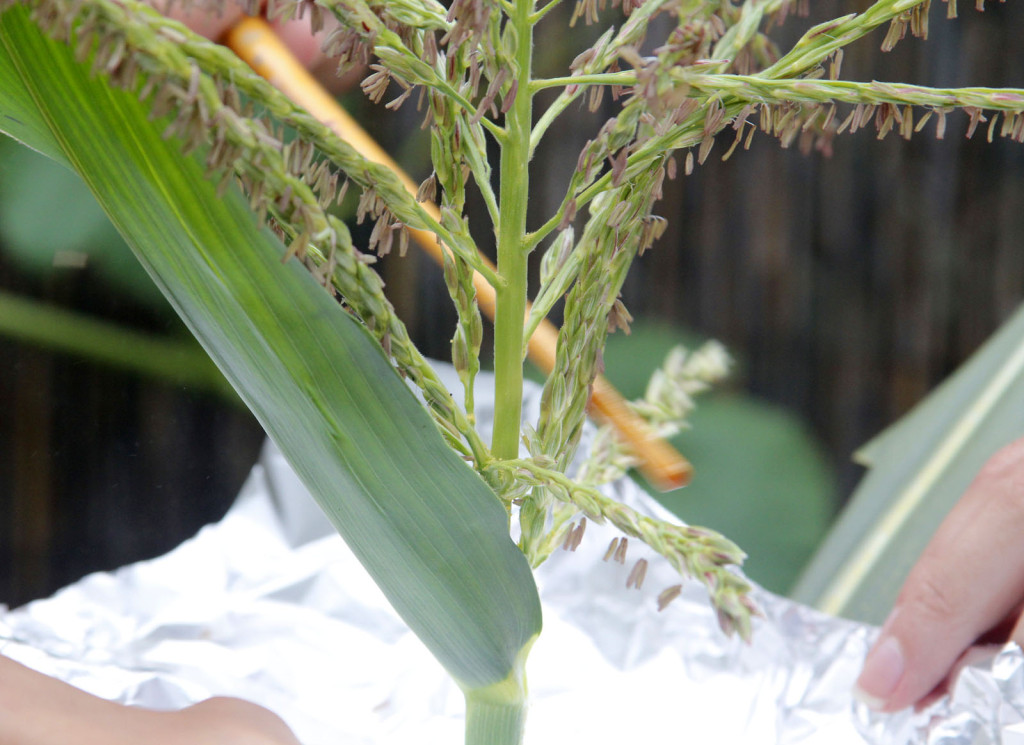In order to track our progress each year, I try to quantify the harvest as best I can. I keep a written journal of most of the important activities and progress in the garden, and the journal includes a penciled-in log of any harvests that happen during each week of the season. When I have the chance, I copy that handwritten data into a little spreadsheet I made which handles some of the calculations I’m interested in and updates the totals automatically for me. This spreadsheet is designed specifically for small gardens, not farms, and possibly not even for very large gardens. It’s targeted for situations where you harvest small amounts and can keep track of harvested items as single units (for most things) or small bunches (for herbs), rather than as large bulk amounts such as bushels.
The concept behind this spreadsheet is that once you add in some typical values at the start of the season for the weight of a given variety when harvested (like the average weight of one cherry tomato), the spreadsheet does all the rest of the calculations as you add to your counts each week. It does its math based on counts, so that you don’t have to keep weighing each time you harvest, just tally how many single items you harvested that week.
Here is a PDF version of our 2015 harvest spreadsheet:
Harvest Spreadsheet PDF
I’ll post a link to a working .xlsx spreadsheet at the end of this post, which is free for you to use and tweak as you see fit.
Here’s how it works:

Column A: (Name and Variety)
B (Ounces per Unit): A unit might be Continue reading Logs & Data








